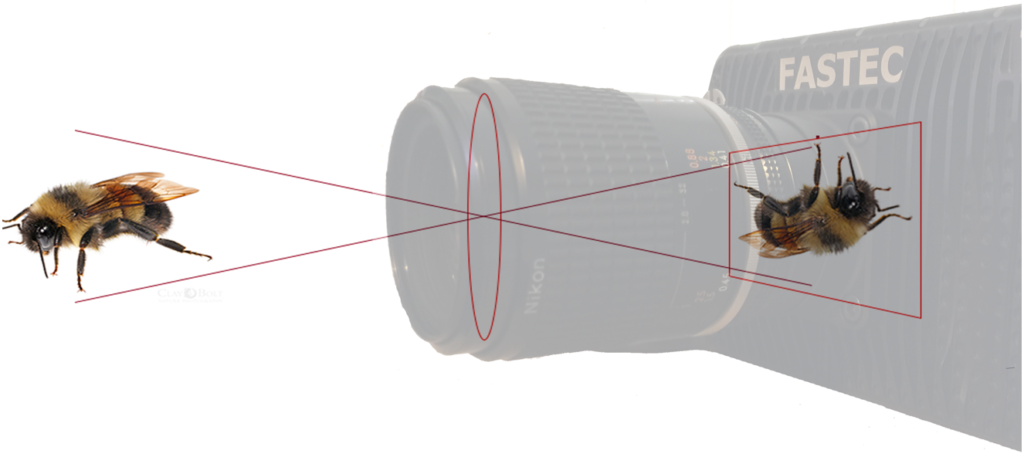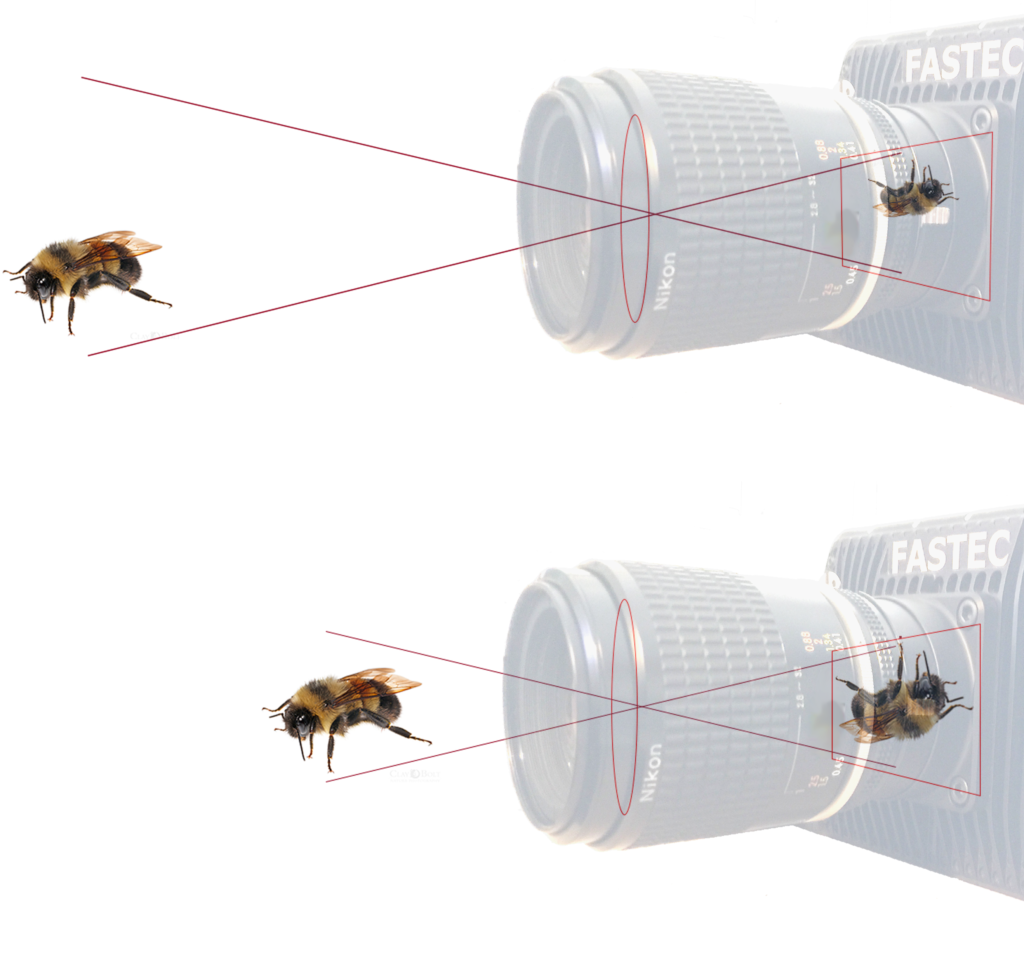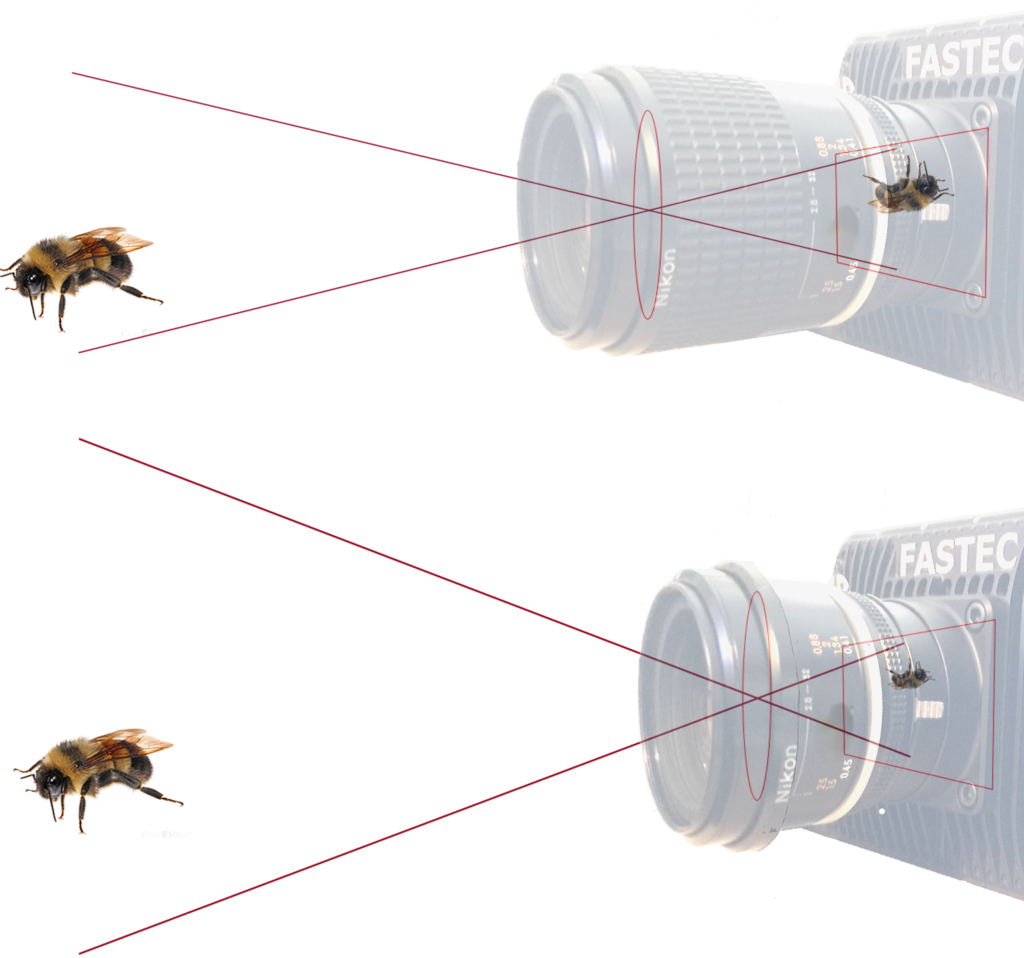Determining the frame rate needed for a given application is one of the challenges of high-speed imaging. While it is intuitive that the faster an object moves, the faster the frame rate needs to be to capture it with a high speed video camera, that is only part of the equation.
In the video above, an airplane, race horses, and a microscopic mite are shown in slow motion. They all traverse the screen at about the same rate, although in life they travel at vastly different speeds.
The horses run at about 40mph, while the plane is traveling at more than 10x that speed. Both the horses and the plane were captured in full HD at about 630fps. The mite was captured at 720p at 1400fps, although it was traveling at less than 1mph.
From this, it is pretty obvious that absolute speed is not the important factor, it is really the speed the object is traveling through the field of view that is important.
The purpose of this article is to explore the relationship between frame rate and the scale of view, which we refer to as magnification.
First let’s define a few terms that we will be using:
- Field of View (FOV) ……… The area in space that will be captured in the image
- Object ……… Something of interest within the FOV
- Image ……… The likeness of the Object projected on the camera sensor
- Magnification ……… Image Size ÷ Object Size
Example: 
Here the object is a bumblebee. The image of the bee is projected on the camera sensor the same size as the bee, so Image Size ÷ Object Size = 1.
 Magnification decreases with distance. You may note when shopping for lenses that maximum magnification is among the specifications. Maximum magnification is calculated at the minimum focus distance for a lens. It is not a constant. This is something we experience everyday: as objects move away from us, they appear smaller.
Magnification decreases with distance. You may note when shopping for lenses that maximum magnification is among the specifications. Maximum magnification is calculated at the minimum focus distance for a lens. It is not a constant. This is something we experience everyday: as objects move away from us, they appear smaller.
Magnification at a given distance increases proportionately with lens focal length. A 50mm lens will have twice the magnification of a 25mm lens of an object at the same distance. And the width and height of the field of view at the object plane will be half as great with the 50mm lens compared with the 25mm.
The video below shows airplanes captured in slow-motion sequences by two Fastec high-speed cameras. The cameras are side-by-side and about 100m from the airplanes. One camera (closer view) has a 100mm lens, while the other (wider view) has a 25mm lens.
The 100mm lens produces a view that is 1/4 as wide as that of the 25mm lens, so the airplane appears 4x as large.
The FOV is 4x as great in the wide view as it is in the narrower view. This means that it will take the airplane 4x as long to traverse this distance. In order to show them moving across the screen together in the video, the capture rate had to be 4x slower for the wide view.
For this video the top view was captured at 1000fps, while the bottom was captured at 250fps.
Both wide and narrow views may have value, depending on the data you wish to collect. The narrow view at the higher frame rate makes analysis of the propeller rotation possible, while the wide view, taken over a greater time and distance, may be better used to analyse the plane’s acceleration.
For more detail, view or download our presentation on Magnification and Frame Rate, which is also accessible from the Tutorials & Tools page.